By Russ Ouellette
 A while ago, I wrote a column about myths, urban legends and misconceptions tied to pipe smoking. [Common Misconceptions About Pipe Tobacco, June 20, 2010]
A while ago, I wrote a column about myths, urban legends and misconceptions tied to pipe smoking. [Common Misconceptions About Pipe Tobacco, June 20, 2010]
I mentioned at the end of the column that I would be glad to address other such items if folks wanted to email me with their thoughts. The stream of emails surprised me, as I believed that most of the other myths had been discredited long ago. I also have received some requests about supposed misconceptions that are actually true (i.e.- Someone who has been repeatedly told over the years that “Burleys are the easiest on your tongue” thought that I should warn people that Burleys are the cause of tongue bite. They may or may not be the cause, but other strains can cause bite as well.). So, let me address these new ones that have been sent my way:
Tongue Bite is the same as Tongue Burn– Most people who complain of tongue bite aren’t experiencing bite at all; they’ve simply burnt their tongues. Tongue bite is a chemical reaction, usually caused by alkalinity. The sensation is similar to a cramp and is different than “leather tongue” (a sore, heat damaged tongue). The common causes of leather tongue can include improper packing, smoking too fast and tobacco that is either too dry or too moist, among others. True tongue bite doesn’t leave the tongue raw and bumpy as is common following heat damage. Since Burley can produce alkaline smoke, it is commonly targeted as the culprit regarding bite, but other tobaccos can have a higher pH as well.
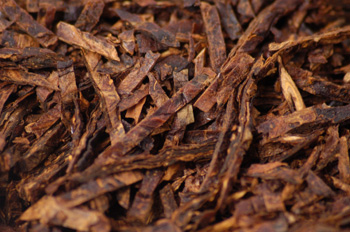 If tobacco is overly moist, PG is the cause– I often get complaints from people regarding excessively high moisture in tobaccos, especially with aromatics. With my own blends, I get the opposite complaint (being too dry) because I add no additional water or humectants, but when a blend is damp, pipe smokers love to point fingers at propylene glycol. I’m not a fan of PG, but it has its place, especially with mass-market tobaccos that may sit on a retailer’s shelf for a year or more. Additionally, there are times when PG isn’t the reason for goopy tobacco. Flavorings, water and other humectants (like sorbitol) are added to some tobaccos, and can, in turn, make the tobaccos too wet.
If tobacco is overly moist, PG is the cause– I often get complaints from people regarding excessively high moisture in tobaccos, especially with aromatics. With my own blends, I get the opposite complaint (being too dry) because I add no additional water or humectants, but when a blend is damp, pipe smokers love to point fingers at propylene glycol. I’m not a fan of PG, but it has its place, especially with mass-market tobaccos that may sit on a retailer’s shelf for a year or more. Additionally, there are times when PG isn’t the reason for goopy tobacco. Flavorings, water and other humectants (like sorbitol) are added to some tobaccos, and can, in turn, make the tobaccos too wet.
Virginia blends smoke hot– This statement is very much like “pianos are black”. Just because one Virginia blend is a hot smoker, doesn’t mean that all of them are. Yes, the higher sugar and lower oil contents of Virginias can contribute to a hotter experience, but with careful processing and the right kind of cut, Virginias won’t burn much hotter than, let’s say, Burley. One of the other reasons for the higher heat in Virginias is due to the thinner, more easily combustible leaves. This is one of the reasons that Virginia flakes are common; the pressed flakes will burn much slower and cooler when not rubbed out completely.
Perique Myth– #1– “There’s only one farmer growing/making Perique.”
Actually, there are at least seven farmers currently growing Perique for L.A. Poché, beside whatever Percy Martin produces, and more farmers will be joining the fold; the future for the Cajun leaf looks promising.
[Editor’s note: Direct information provided from L.A. Poché Perique owner, Mark Ryan, is that in 2011 there will be 10 – 12 farmers growing Perique (including Percy Martin and his two sons) and that is expected to double next year. In acreage, last year there were approximately 15 acres of Perique grown. The estimate for 2011 is 70 acres. L.A. Poché Perique is also instituting the use of greenhouses this year as well. PipesMagazine.com will be on location for the unveiling of the new greenhouses this spring.]
Perique Myth #2– “Most of the Perique on the market is fake.” The truth is that all of the Perique sold commercially for more than 30 years is a blend of true St. James Perique and Perique-method processed Burley. In fact, by law, if the tobacco doesn’t contain real St. James Perique, it can’t be called Perique. So, if you have been smoking domestic or imported blends containing Perique since before 1980, you have been smoking the so-called “fake” Perique.
[Editor’s note: Mark Ryan believes the start of the blending goes back even further to the 1950’s for some producers and later the rest followed.]
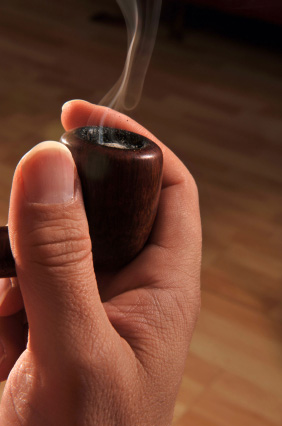 The more expensive the pipe, the better the smoke– Probably the majority of pipe smokers who have been into the hobby for more than five years can attest to the inaccuracy of this statement. There are, however, elements of truth that probably contributed to the maxim. Firstly, the more expensive pipes are usually going to come from the most skilled craftsmen, who are in high demand, and as such, their engineering tends to be of the highest level, which tends to yield a pipe with better smoking qualities. Secondly, pipes made of briar with tight grain will normally sell at a higher price due to the rarity and beauty of an exceptional piece of wood, but tightly grained briar is often harder and transfers heat very well, resulting in a better smoke. Lastly, carvers who buy higher grade plateaux briar spend more on every block, which, in turn, drives up the cost of each pipe. Additionally, pipemakers who use premium briar are less likely to allow a pipe with a noticeable flaw or fill to be sold with their name stamped on it. The high rate of rejection pushes the price up even further, and so the work of some of the best makers will be quite pricey due to the refusal of these artisans to allow themselves to be associated with anything below their standards. Most of the time, any carver who is that particular about his or her work, will feel similarly about the engineering and smokeability of the pipe as well.
The more expensive the pipe, the better the smoke– Probably the majority of pipe smokers who have been into the hobby for more than five years can attest to the inaccuracy of this statement. There are, however, elements of truth that probably contributed to the maxim. Firstly, the more expensive pipes are usually going to come from the most skilled craftsmen, who are in high demand, and as such, their engineering tends to be of the highest level, which tends to yield a pipe with better smoking qualities. Secondly, pipes made of briar with tight grain will normally sell at a higher price due to the rarity and beauty of an exceptional piece of wood, but tightly grained briar is often harder and transfers heat very well, resulting in a better smoke. Lastly, carvers who buy higher grade plateaux briar spend more on every block, which, in turn, drives up the cost of each pipe. Additionally, pipemakers who use premium briar are less likely to allow a pipe with a noticeable flaw or fill to be sold with their name stamped on it. The high rate of rejection pushes the price up even further, and so the work of some of the best makers will be quite pricey due to the refusal of these artisans to allow themselves to be associated with anything below their standards. Most of the time, any carver who is that particular about his or her work, will feel similarly about the engineering and smokeability of the pipe as well.
All that having been said, I own a 30+ year old, no-name Italian meerschaum-lined Canadian that I paid less than $30 for, and in all those years, I have never had a bad smoke from that pipe. Hell, it has a remarkably thin vulcanite stem, and after all these years, I still haven’t bitten through it. I know many people who swear by their Dr. Grabows, Medicos and off-brands, and I’ve owned some pipes that were rather expensive that smoked horribly.
So, I guess that the most accurate statement on this subject would be, the more expensive the pipe, the more likely that the pipe will smoke well.
I enjoy the opportunity to counter some of this misinformation, and I’m sure that there’s a lot more out there, so if you know of a myth you’d like me to check into, just use the contact information at the end of this column, and I’ll gladly try to put together part three.
|
Russ Ouellette is the blender/creator of the Hearth & Home series of tobaccos for Habana Premium Cigar Shoppe and www.pipesandcigars.com in Albany, NY. He has been a pipe smoker and blender for over 30 years, and enjoys feedback from the pipe smoking public. You can reach Russ at russo@pipesandcigars.com or by calling 1-800-494-9144 on Monday, Wednesday and Thursday from 9 am to 5 pm and Friday from 1 pm to 5 pm. |


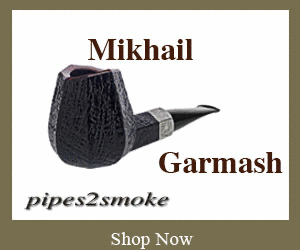
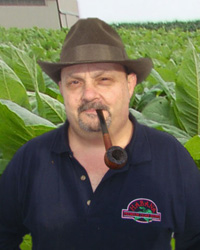
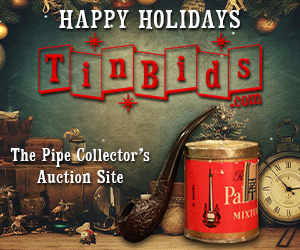













Great stuff Russ!
Thanks Russ – great information. After smoking pipes for over 20 years I have found some real gems in those inexpensive pipes. Ahh to think of all the money I could have saved in my youth – when I only bought high grade pipes.
Always a pleasure to read Mr. Ouellette’s down to earth, practical take on pipe smoking. There’s more to it than just dispelling myths. From his web page comes my favorite, a common sense approach to building (or not building) carbon cake at the bottom of your pipe bowl: If you never smoke a bowlful down that far, don’t worry about how much cake is down there!
Russ,
Whereas I agree with almost all you say in this article, there is one point I must comment on- the use of propylene glycol.
Even though you are no fan of it, you go on to say it has it’s place, especially in mass-market tobaccos that may sit on a retailers shelf for a year or more.
Can we just be clear what we are talking about here: propylene glycol is that strange, sticky, almost florescent liquid that is AUTOMOBILE ANTIFREEZE.
Surely to heaven, even if some unfortunate soul buys mass-market tobacco that’s been on the shelf for a long time, they don’t want to smoke antifreeze!
If cats or dogs drink antifreeze, they die, because it destroys their kidney function.
Very often the products given off by compounds when they are burnt are much more toxic than if the compound is ingested orally.
I dread to think what propylene glycol gives off when it’s combusted- and I shudder to think that ANY producer has the nerve to put it into pipe tobacco.
I think to some degree there exists an attitude in governmental food-safety agencies that if we are stupid enough to smoke tobacco, then we deserve no protection as consumers, ie that manufacturers can put whatever the hell they like into tobacco blends….but ANTIFREEZE for cars? No thanks!
Great article, Russ. Your point about pipe price reminds me of a woodworking buddy who visited a woodshop in a third-wold country. He was bored one Saturday and while taking a walk a short distance from his hotel he was drawn to the door of a small woodshop by the unmistakable noise of a saw. He looked around and immediately noticed that the “saw” had no guards; no brand name, and in reality was simply a piece of lumber with a blade mounted an arbor from a discarded appliance poking through a slot. As he stood there feeling smug and sorry for these poor, primitive craftsmen his eyes began to adjust to the low light, and what he saw made his jaw drop! There were pieces of furniture and cabinets in various states of completion; all with intricately detailed carvings and precise exposed joinery. He said there were tighter, finer dovetails than he had ever seen, and that they were all made using tools that he would have passed on if they had been in a cardboard box labeled “Free”. That experience changed him by snapping him from the never-ending tool buying trap he was in and getting him focused on the heart of woodworking and put the “craft” back into the Craftsman.
I learned many years ago that I enjoy smoking pipe tobacco. Sounds simple enough, but that’s just the start. I went on a 15 year journey and spent hundreds of dollars, but eventually was brought back where I started: The corn cob pipe. Cobs give me the taste that I want, the burn-time that I expect and being a natural, American-made product I get a satisfaction that I never felt when smoking a briar.
Perhaps it’s just me, but in the end that’s all who matters.
Scott
P.S. tobaccoblender, just because a product or chemical is used in anti-freeze that doesn’t make it bad. Heck, there’s more “Dihydrogen monoxide” in anti-freeze than propylene glycol, yet I bet you still use it. Read this: http://www.dhmo.org/facts.html
Tobaccoblender:
You’ve been misinformed about propylene glycol (which, as I stated, I don’t use). The main component chemical in antifreeze is ethylene glycol (which is decidedly toxic), not propylene glycol, which is food-grade and FDA approved for consumption. Its purpose in food is maintain moisture is a variety of products so they don’t dry out on the shelf.
It’s unfortunate that their chemical names are so similar as this inaccurate rhetoric has been used for years to scare the crap out of pipe smokers.
Russ
Good job, Russ.
Excellent article Russ,
I feel somewhat jaded in replying.Although I have over 25 years smoking a pipe, my knowledge is nowhere as extensive as yours. When I say 25 years, that refers to when I began buying retail pipes and retail smokage.However as a kid, we grew up raising burley here in the mountains of NC.One of the things that we have done was make our own smokage and pipes,in secret of course. Our favorite was simply some burley leaves, dried, and twisted.We would take this, pour molasses on it put it in a fresh cut cherry tree limb.We would basically gouge out a hollow place,put the leaves in with molasses and some apple slices.We then would tie the halves back together and dip the whole limb in wax. It went on a shelf in the barn until the next year.Of course we would be removing the limb placed there the prior year.Our smokage would have to be dried out for a while before we could smoke it.No preservatives, no blending,no fancy store bought pipes.No cake,no pipe tools,no idea what we were doing for that matter.Simple hollowed out corn cobs and cane/bamboo stems.But then again,we never heard of those terms.We thought it was great. We just didnt want to get caught smoking by our parents or grand parents, and we never was.And I can honest say that was some of the best smoking I had ever done.To me, that distills a great many myths in itself.
Great article as usual, Russ. I have and smoke a number of less expensive pipes as well as some “better” ones, and always get good smokes from them.
Always great advice Russ, and dispensed in the most genteel manner.
Russ:
Enjoyed your article about the quality of pipes usually smoking better then other less expenisive pipes. Your reasoning about the “mechanics” of the pipe being very important. Since reading Rick Newcombe’s “In Search of Pipe Dreams” I have begun with an intermediate expense pipe and drilled the stem and draft hole to Rick’s recommendations. Low-and-behold this pipe began to smoke alltogether better. Since this experience I have drilled most of my pipes the in the same manner. However, I have found some of my better, more expensive pipes not needing this drilling sequence since my Costellos are already are mechanically right.
Again, thanks for the common sense appoach about what makes a pipe smoke well.
Regards,
Steve
great article!! by the way… what kind of tool is that on the article pic Russ? it looks like a czech tool but is 4 way?? curious…